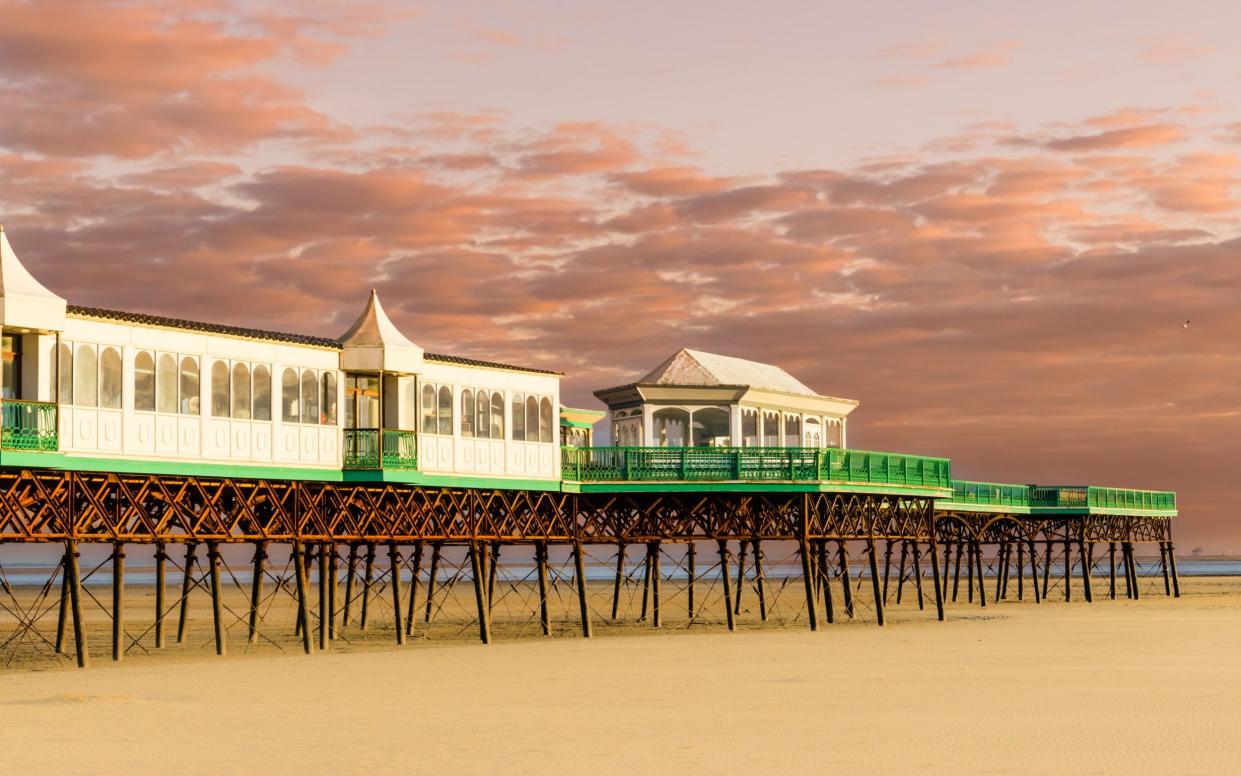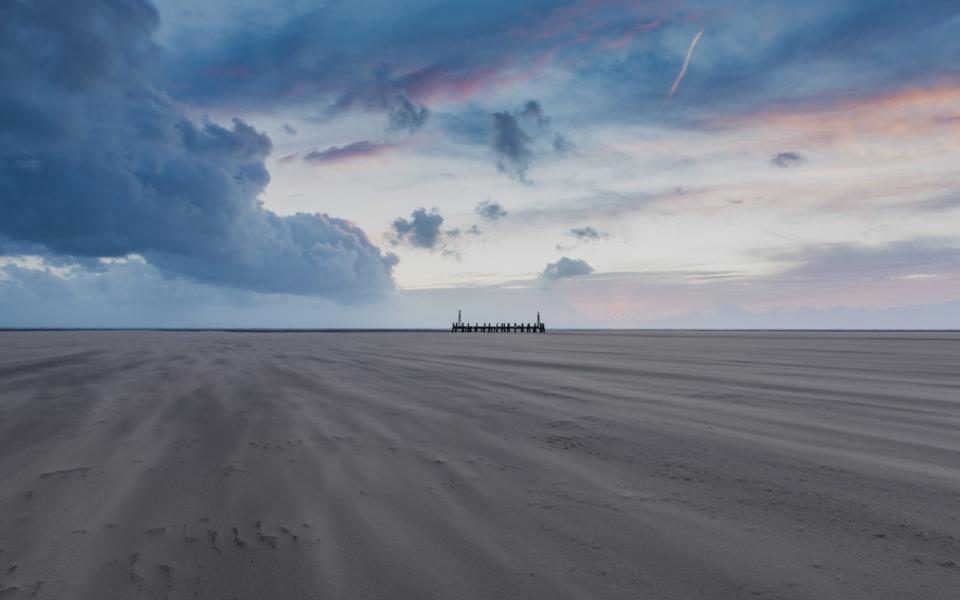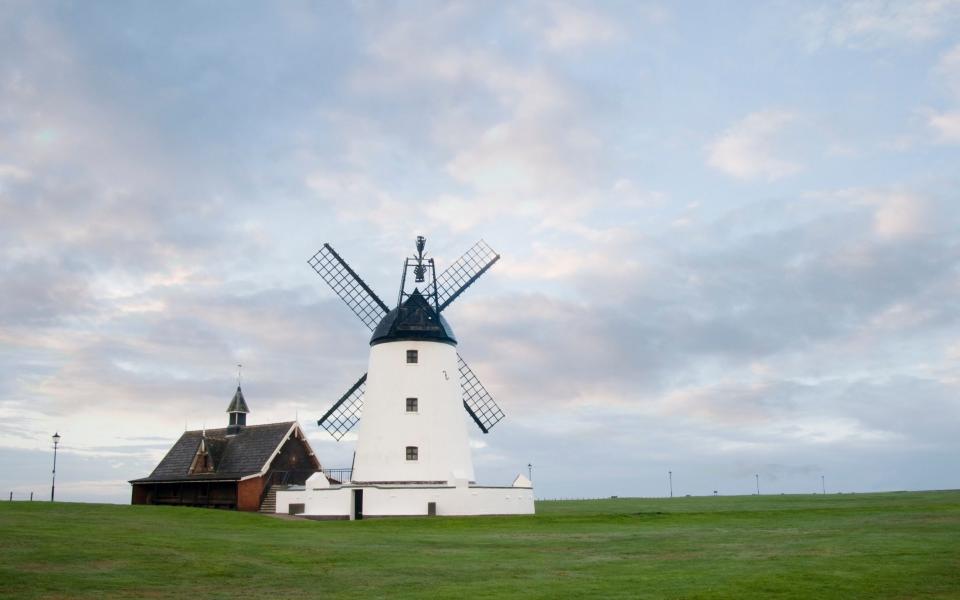The neighbouring seaside towns that are worlds apart

I didn’t really know Lytham St Annes was two separate places until I paid a return visit in August, after a hiatus of 40-odd years. As a pre-teen, I used to visit my maternal grandad there. He would watch me do 360s on my skateboard and then take me to the local record shop to buy Stranglers singles. Yep, I was that cool.
I recall he lived on the ground floor of a huge Victorian terraced redbrick with his bespectacled wife, my step-gran, but not the street, or district. Was it Lytham, or St Annes?
A quick check of the map showed just a single rail station between the twin resorts. I stopped first at St Annes; it sounded older, quainter, the sort of place grandad might have lived.
It was still around 1978 in the “centre” of St Annes, which was crumby looking and largely closed. This despite it still being, technically speaking, summer and a Sunday. The only coffee shop was a heaving, clamorous Costa; I waited in line for five minutes and, as it hadn’t budged, and seeing I was close to around 50 strangers as keen on personal space as they were on facemasks, I bolted for the shore.
The weather was classic British seaside – warmish, breezy, the overcast sky sucking the life out of everything. The tide was as far away as it had been since tectonic plates created a marine trough between England and Ireland; you could see Wales, Southport and Blackpool Tower but not the sea. Still, families were spread out across the Saharan plateau that passes for a beach, playing rounders, vaping, eating from Tupperware, drinking from flasks. They were the in-crowd; the food on offer at the handful of outlets looked dire. The coffee available was mainly of the scalding Ovaltine variety, there were lots of mobility scooters; one wonders what one former resident, the comedian Les Dawson, would have made of it.

The only structures on the beach were the Victorian pier that, mercifully, had not been sacrificed entirely to slot machines, and the ruinous remains of an old jetty. A half-dozen mounted donkeys were being led from one blank space to another. I didn’t go close enough to see their sad eyes. I suppose donkey rides are an evocation of the days when a quarter of Lancashire came here on Wakes Weeks. But they reminded me of camels crossing the Empty Quarter.
It was desultory. It was directionless. I couldn’t see anywhere to sit down. There was only one thing for it. Lytham.
I could have walked but didn’t. There was a need for speed. I drove the three miles through boulevards handsomely at odds with the shore’s tired “attractions”. I found free parking down a tree-lined street; from the crammed-in motors there was evidently more demand here. There were smarter cars, smarter people. This all felt different even before I arrived at the centre of Lytham.
Where, gobsmackingly, I discovered a pretty, pedestrianised market square around which was an array of bijou cafés (of the flat white, soy latte variety), cool-looking restaurants (Mediterranean, modern European, several Italian, Turkish, Thai, Spanish, Chinese, Greek, Indian), artisan bakeries and ice-cream parlours, gin bars, gastropubs and other themed drinking dens. There were independent fashion boutiques, antique stores, designer shoe shops, interior décor emporia, lingerie, health food, paper, fancy piemakers.

As I was taking all this in, something growled. At first I thought it was the husky-St Bernard-Chimú cross that was dragging a blonde lady towards its favourite pet shampooing hub. But it turned out to be a Lamborghini, being tailed by an Overfinch, after which came a Maserati. I’d read somewhere that footballers were opting for Lytham over Formby; these drivers were not from Morecambe FC.
There were also plenty of well-dressed (‘well’ as in motif-shirted, chinos, Rolexes) older blokes in big angry Audis and Lexuses. Stockbrokers? Property developers? Probably both – it turns out Lytham is a regular house price news item in the north of England: even £1,000,000 won’t buy you anything swanky.
This was all fascinating, but disconcerting.
How, in such a short distance, could life be so different? Did the good people of St Annes know this fiesta of garish and indulgent delight was happening on their doorstep?

Lytham St Annes, or rather, Lytham and St Annes, seemed to embody perfectly the Two Nations of today; on the one hand, the forgotten, unhealthy, old before their time English, in grim surroundings; and, on the other, the richer, showy, individualistic, self-satisfied, big car-driving English, surrounded by a simulacrum of a holiday in Marbella.
I wasn’t seeing what is called the culture war, or, more old-fashionedly, the class war – but the reasons for these.
I wasn’t sure what to do with this information, so I got some fish and chips – a St Annes sort of lunch – and went to the sea again. Here was an old windmill, that I had definitely visited with grandad in those skateboarding punky olden days. Here were historic sites. Here there was even a bit of seawater, mixing with the Ribble’s salt. Here was a coffee shack. Here was somewhere to sit down, take it all in, and look out.
Perhaps grandad lived in Ansdell or Fairhaven, the two “villages” between the extremes. I reckon he would have preferred tea and scones in St Annes over falafel and pinot in Lytham.


